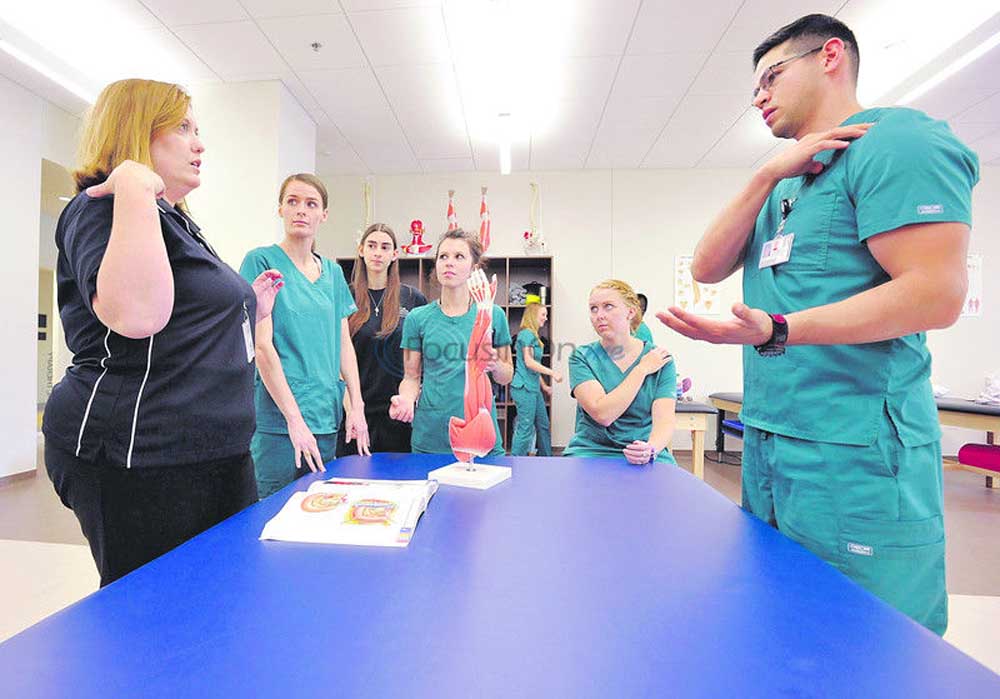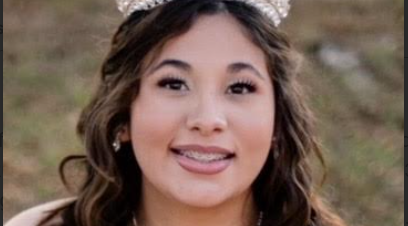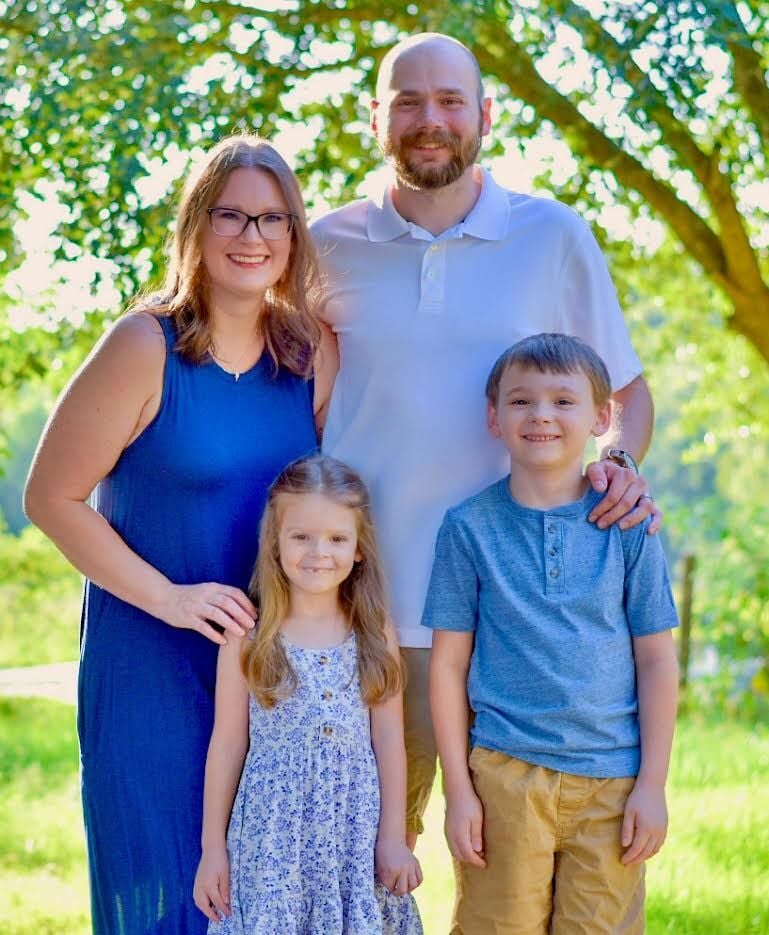TJC offers new physical therapy assistant courses
Published 4:54 am Tuesday, October 27, 2015

- Christine Melius, program director for the Physical Therapist Assistant Program at Tyler Junior College, goes over the muscles of the arm with students Jessica Kemp, second from left, Jackie Christian, Mariya Spencer, Meagan Gailey and Salvador Escobar during a lab class Thursday, Oct. 8, 2015, at the school in Tyler. Andrew D. Brosig/Tyler Morning Telegraph
Getting to spend more time with physical therapy patients, developing a relationship with them and seeing them improve appealed to many of the first students in Tyler Junior College’s new physical therapy assistant training program.
Having personally experienced physical therapy or seen a relative undergo physical therapy was another draw, some said.
Trending
The physical therapy assistant program kicked off this fall with 20 students from Tyler and the surrounding area in response to community interest expressed for several years. Construction of the Robert M. Rogers Nursing and Health Sciences Center provided a facility for it and other TJC programs.
“Texas is the second largest employer of physical therapy assistants in the nation. There is a large utilization of physical therapy assistants in the area and definitely job opportunity,” Dr. Christine Melius, TJC department chair and program director, said.
When the administration was determining if there was an increased need for a physical therapy assistant program, estimates were for a 41 percent increase in the demand for them in the United States, she said.
It is an attractive field since physical therapy assistants with an associate degree can start out making $45,000 a year on the lower end, Dr. Melius said.
Administrative work seeking accreditation of the program was initiated a year and a half prior to its start. But that process is not expected to be complete until the spring of 2017, when the college will hear if the program will be granted accreditation from the Commission on Accreditation in Physical Therapy Education.
That’s also when the first students will graduate from the two-year program.
Trending
To be accepted for enrollment, they had to meet admission standards by taking two prerequisite courses and a standardized test, plus carry out 48 hours of observation in clinics under the supervision of a physical therapist or a physical therapist assistant.
They watched how the physical therapist or assistant take care of patients to make sure that working in the field interests them and that they feel a pull towards it, Dr. Melius said
The physical therapist or assistant also assessed applicants on whether they would be good students and later an asset to the community as professionals working in the field, Dr. Melius said.
“It is intentionally challenging to get in. The program itself is rigorous, so we need to make sure that they have both the character and the academic preparation,” she said.
First-year student Maria Spencer, 23, originally from Arizona, who now claims Tyler as home, said members of the first class are a historical group that gets to set the precedent.
“It’s exciting to be part of something new. There’s a high expectation on us, but at the same time that’s going to create in us a greater desire to succeed as professionals when we get out (of the program),” she said.
Ms. Spencer, a double amputee whose lower legs are prosthetics due to a congenital defect, experienced different types of physical therapy growing up. She said it led her to want to have a positive influence and impact on patients by inspiring them with her story and how therapy helped her.
Jackie Christain, 21, of Tyler, also has had personal experience with physical therapy associated with eight surgeries to correct rotational problems with her legs. Her mother is also a physical therapist.
“I fell in love with it,” Ms. Christain said. The physical therapy assistant program “is a lot of work, but it will definitely be worth it in the end,” she added.
Students start out in a mixture of lecture classes and lab courses when they practice physical therapy on each other. On average, their day consists of three hours classroom lecture and two to four hours in the lab practicing their skills.
“Practicing with a patient comes after they’ve shown their skills competently in the classroom in the lab setting. Then they are prepared to go out into a clinic and work under the supervision of a physical therapist or physical therapy assistant with patients,” Dr. Melius said.
“We are really careful to get them up to a safe level and a competent level before they go into the community.”
Their first year in the program, trainees will complete a spring and a fall semester and have a six-week clinical educational experience during the summer, working 40 hours a week in a clinical setting and learning hands-on how to be a physical therapy assistant, Dr. Melius said.
In their second year, they will attend classes in the fall and spend most of the spring semester out in a clinic. In the final spring semester, they will do two clinical education courses that are six weeks long.
“We find it to be incredibly important that they have hands-on clinical experience. We have the maximum allowable number clinical education hours that we are allowed to have by the accrediting body,” Dr. Melius said.
Besides the focus on the clinical aspect of preparing students to serve physical therapy patients safely and competently, she said, “What’s also important to us is the development of their professional behaviors.”
Students are given a self assessment of their professional behaviors every semester to assess their critical thinking, communication, problem solving, inter-personal skills, use of constructive feedback, effective use of time and resources, stress management and commitment to learning.
“They have an individual meeting with one of the faculty members and we discuss with them where they rank themselves and where we see them,” Dr. Melius said. “Our students are required to hit a certain marker every semester before they progress to the second semester because being a good physical therapy assistant is not just about the clinical skill. It’s about the professional skills.”
Graduates of the physical therapy assistant program, Dr. Melius said, will be able to work for a variety of places such as an acute care hospital, outpatient clinic, a skilled nursing facility, a home health company or a pediatric clinic.
Salvador Escobar, 24, switched his major from nursing to physical therapy assistant after he saw a family member undergo physical therapy.
“In physical therapy you get to spend more time with a patient. I like to have one-on-one interaction with patients; I like to help people more than anything,” he said.
The physical therapy assistant program, Escobar added, “is great. I have two of the best instructors I have ever had. I enjoy it. Every day is different and we are learning so much.”
Armado Hernandez Jr., 27, of Jacksonville, decided to enroll after a family member who suffered a spinal cord injury in a tragic accident went through physical therapy. “I was able to assist him do exercises. I could see myself doing it for a career,” he said.
Similarly, student Laura Oudovico, 21, of Tyler, said seeing several family members progress with physical therapy after broken hips and strokes made her want to be one of the people who can help someone walk again and enjoy everyday life activities.
“I love the physical therapy assistant program,” she said. “They (TJC officials) put a lot of work and effort into this program and into the building. We’ve got good professors that are teaching us all kinds of things.”
Chelsea Tart, 22, of Trinidad, called the building “awesome” and remarked, “We have a lot of resources and our teachers are great. The students are great. We are like a big family.” The program moves at a rapid pace, she observed, adding, “I didn’t know I could learn so much.”
TWITTER: @TMT_Betty






